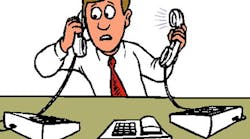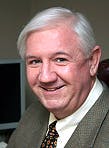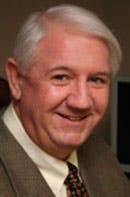How many callbacks are acceptable for a service technician? That's a good question. If the technician is properly trained and their vehicle is properly stocked, the simple answer is: none! The job should be completed properly the first time, every time. But is that realistic? No, because manufacturing is not flawless.
From a statistical standpoint we know that about 2% to 2.5% of all parts manufactured fail simply because of mass production. That means our Key Performance Indicator (KPI) for callbacks is 2.75%. If a tech goes on 100 service calls during the month, that means two or three callbacks are acceptable. If the callback percentage exceeds 2.75% we can be pretty sure the cause was not a part failure. It was more likely the failure of the technician to install the part properly.
Service should be the most profitable department within
your company, yielding a 20% net profit or better.
Like all 24 KPI's for the service department, a callback goal needs to set, and performance against that goal needs to be measured. When specific goals are set, the tendency is to not only reach the goal, but to exceed it. Outstanding technicians want their performance to be measured, and they want to be rewarded for having done an outstanding and efficient job.
But, herein lies the problem. Tracking total callbacks by tech is not a tremendously difficult task. If they are sent on a callback, the callback can simply be noted on their timesheet. However, just because a technician went on six callbacks during the month does not necessarily reflect the true picture. What if the callback was created by another technician? What if John improperly installed the part, but William was sent out to fix it? Another situation that often happens is that the installation crew failed to do their job properly, but the service technician is the one sent out to fix the situation. Knowing our tech went on six callbacks during the month is not enough information to evaluate his or her performance.
Knowing the Reason for the Callback
When we analyze our tech’s six callbacks we might find that three callbacks were initiated by the installation department and one callback was caused by another service technician. That means our tech, with six callbacks, actually did an outstanding job for the month. He only had two callbacks that he created, and the reality is that those two callbacks were probably related to equipment problems, not his failure to install the part properly.
This means a technician’s callback number must be filtered in order to get a clear picture of his or her performance. Can that be done manually? Sure it can, but with a significant degree of paperwork and difficulty.
Remember, service should be the most profitable department within your company, yielding a 20% net profit or better! However, that is often not the case. The primary reason for poor profitability in the service department is often the inability to properly manage the technician's efficiency.
—————
If you are serious about wanting to run a very profitable service department you might want to consider investing in our ProfitMaxx software program. If you would like more information on the ProfitMaxx software, you can check it out on the Grandy & Associates website, at www.GrandyAssociates.com/ProfitMaxx or schedule a personal webinar overview that will last about 45 minutes.











